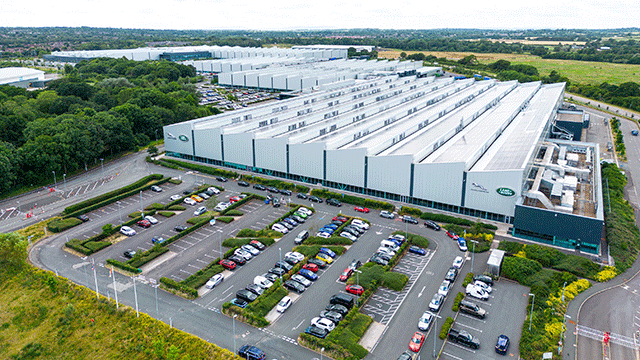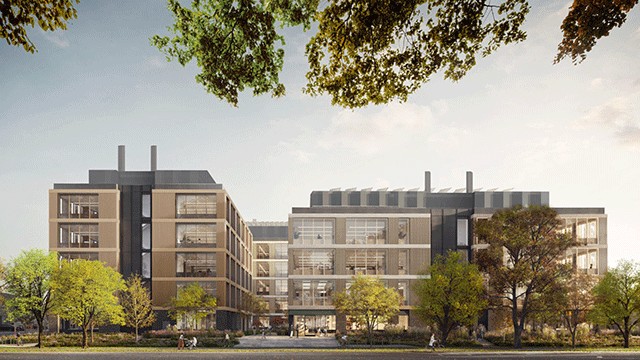The amount of available capital for investing in EMEA property next year is $111bn (€82.5bn) , a slight fall on the figure for 2011, according to DTZ’s fourth annual Great Annual Wall of Money report.
The figure for EMEA has remained broadly stable since the property consultancy started its analysis. However, there has been only a modest uplift in transactional activity. This suggests that relative to Asia Pacific, funds targeting Europe are finding it harder to source appropriate opportunities.
Globally, the amount of new capital for investment in commercial real estate investment markets in 2012 has fallen by 4% to $316bn. The drop marks a reversal in the growth seen since the end of 2009.
Despite the 4% fall over the past six months, the amount of capital available is still 38% above the $229bn reported in DTZ’s first analysis for 2009.
The amount of new capital targeting the Americas rose by 3% to $114bn, the only region to record an increase in newly available capital. It is also the region attracting the most capital following falls in available capital in the other regions. In Asia Pacific, new available capital has fallen by 12% to US$91bn.
DTZ says it is surprised at the 12% fall in capital targeting Asia Pacific, given the region’s attractiveness. However, part of the fall could reflect a lag between transactional activity and reporting by funds, together with a reduction in the level of new IPOs and capital raisings in the listed sector, says the firm.
At the same time, new capital raising levels continue to fall. They are now less than a third of the level seen at the end of 2009. These falls are not surprising given the current uncertain global economic outlook, says the firm.
According to DTZ associate director Nigel Almond: “The reduction in available capital points towards funds now clearly putting money to work, particularly in the Asia Pacific region.”
During 2010, transactional activity in the region more than doubled to $158bn and has remained strong in the first half of this year at $64.7bn. With the Asia Pacific region attractively priced and showing strong levels of liquidity, DTZ thinks that many of the funds took advantage of the favourable market conditions to deploy the newly raised capital quickly.
A lack of suitable acquisition opportunities is a big factor in the US where a strong rebound in transaction volumes seen elsewhere has yet to take place. At the same time, the amount of available capital continues to grow. This implies higher levels of transaction activity to come in the US.
While third-party managed funds remain the most dominant players, their share of the market has slipped back to 49%, in line with their level a year ago.
Publicly listed companies have continued to increase their share and now account for 24% of available capital. This follows strong equity raising last year and in the first quarter of this year. But as equity markets are more volatile as a result of uncertainty over global economic recovery, DTZ sees fewer new raisings.
Institutions have maintained their share of available capital at 14%. A wave of new regulations for insurance companies may affect pension funds in the future, and they may hesitate to deploy capital from some of these funds as they review the impact of new legal structures, warns DTZ.
The share of capital from German funds remains weak at just 1%, owing to a range of factors (see panel, below).
Most investors still favour multiple property types, representing 80% of available capital, because investors prefer having the flexibility to deploy capital across different property types.
Of those funds targeting a single sector, retail continues to be the favoured target, accounting for 35% of single property-type funds; industrial is now the second-most favoured sector, followed by offices and hotels.
Residential increased its share to 11% of single type funds, on a par with the hotels sector. Other uses, including leisure and healthcare, have seen their share diminish to 10%.
Diversity across markets has reduced, with more funds (52%) focused on a single country rather than diversifying across multiple countries or regions. This is the first time since DTZ started its analysis in 2009 that single-country funds have been the dominant focus. This shows that, post-crisis, people prefer to invest in a particular market that they know.
Of the single-country funds, the US still dominates, accounting for just over a half (51%) of all single-country funds, followed by the UK at 10%.
Although European markets score low, the consultancy still sees opportunities in core markets such as the UK and Germany, which also attract a relatively higher share of capital.
Much of the capital raised so far will lead to a higher level of cross-border activity in all regions next year, most notably in the Asia Pacific region. DTZ’s analysis implies a higher proportion of capital targeting Asia Pacific from outside the region, with inter-regional investment accounting for 38% of flows.
A further 28% comes from Asian investors investing outside their home market, but within their region. This compares with 9% of cross-border flows in 2010 and the first half of 2011.
The firm also sees higher cross-border investment in the EMEA region, accounting for three-quarters of investment of new capital. Of this, 31% is expected to come from outside the region, and a further 44% within the region. This compares to total cross border flows of 34% in 2010-11.
But in the Americas, although cross-border activity is set to grab an increased share of overall activity, notably from outside the region, domestic investors will still dominate, accounting for more than three-quarters (79%) of new capital available.
The US is attracting the greatest share of capital and so is likely to lead to a higher level of investment activity next year.
Asia Pacific is still attractive, despite the fall in available capital. Europe’s share of capital has remained broadly stable over the past six months. And there are still many attractive opportunities in core markets as well as more opportunistic plays in Russia and the central and eastern European markets.
Given increasing market uncertainty, some investors will retreat to core opportunities as the economy and leasing market conditions soften.
Because more than a third of fund managers surveyed raised their capital before 2008, DTZ expects many of these managers to be under increasing pressure to deploy legacy capital over the next 12 months or risk returning it to investors.
This could lead fund managers focusing on more value-added or opportunistic product. Managers may also have to look at risk/return profile. And there will be more opportunities emerging from the banks regarding secondary assets and this will provide opportunities for investors looking at this market sector.
The timing of new regulations in the wake of the 2008 financial crisis, such as Solvency II, could lead some institutional investors to pause investment until final details emerge.
If general uncertainties about the world economy persist in the near term the amount of new capital available could fall again as fund managers focus on deploying capital from exiting funds as investment periods near their end; some funds seek to extend fund lives to deploy existing capital; new equity raising softens further as listed companies delay fresh raisings or IPOs.










